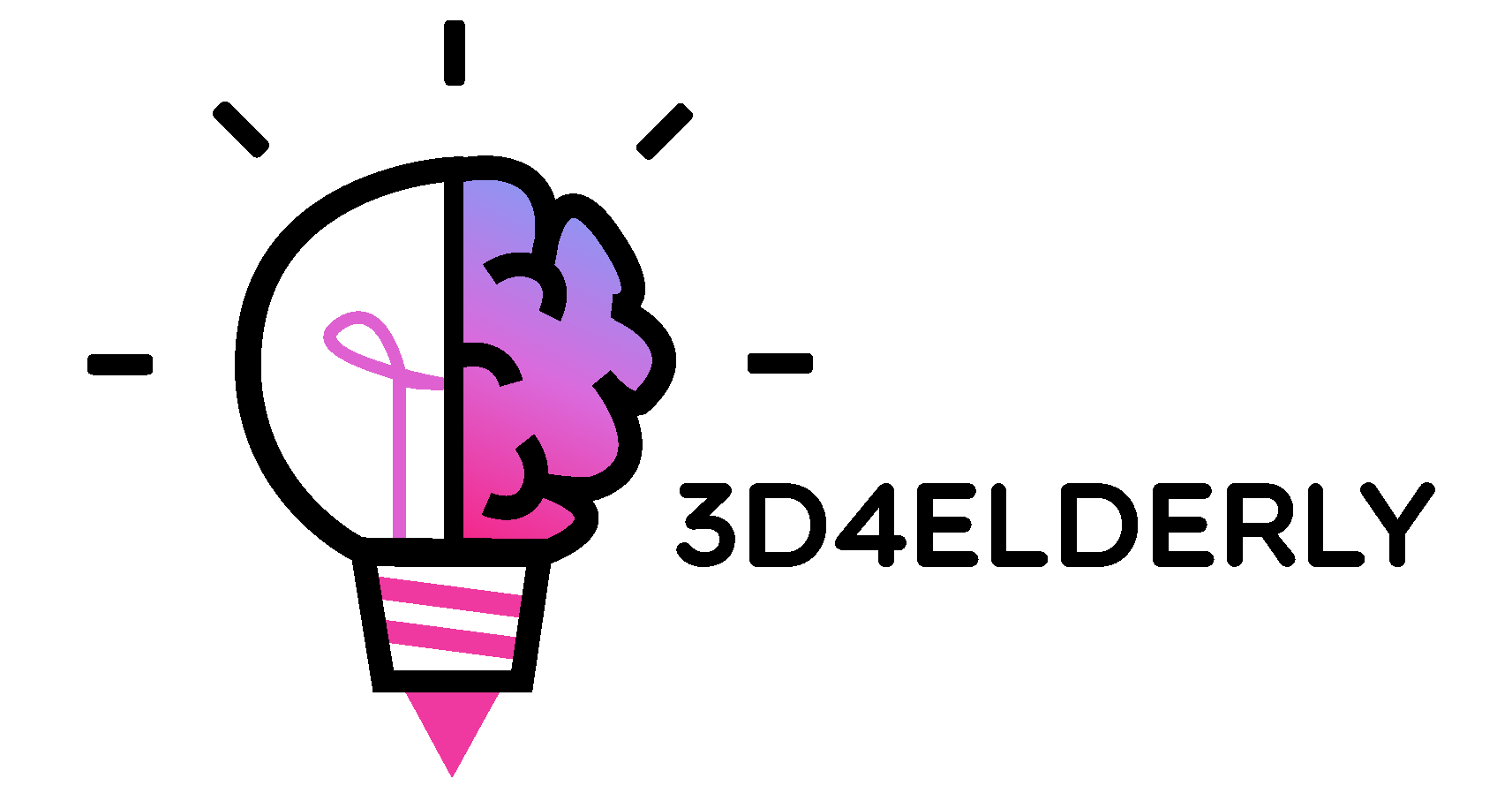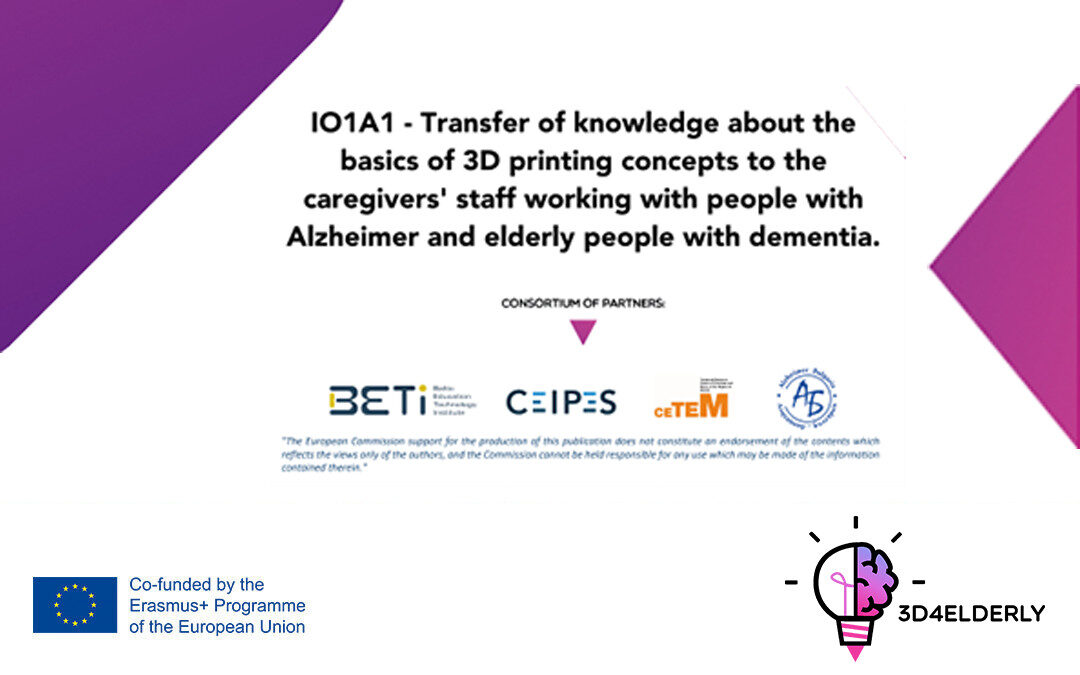This consortium is happy to announce you that the 1st guideline created by the CETEM partner with the collaboration of the other partners is now available.
IO1 – A1 “Transfer of knowledge about the basics of 3D printing concepts”, it is an important tool for the staff (trainers, caregivers, family members etc.) that are dealing with people with dementia and Alzheimer’s disease, to understand the theoretical aspects of the technology that they are going to apply within the framework of 3D4Elderly’ Project.
This guideline is very user-friendly for people without high technical skills, and it gives a basic knowledge on 3D Printing: theory, story, types of 3D printers, main use, etc.
The guideline is divided into two parts:
• The first part guides you in what additive manufacturing is, and how it is used through 3D printing technology. In addition, all types of 3D printing technology, FDM, SLS and all other popular types are explained. Even more important is the process to develop a 3D model with CAD software. Then, the following phase is the creation of the STL files and then the development of the gcode. After that, there is the final phase to the 3D printing process.
• The second part of the guideline gives a brief description of what dementia disease is and Alzheimer’s ensues. Then follow the risk factors and the right environment for the patients to live. Then, the most important thing, it gives you the guideline to how to adapt 3D printer technology into the life of an Alzheimer’s patient and into an Alzheimer center that take care elderly people and dementia patients.
For caregivers staff working with people with dementia and elderly people with Alzheimer, the biggest difficulty is how to use new technologies, which are available to help patients making their days easier with their problems.
Furthermore, if the caregivers of Alzheimer’s patients do not have high planning and programming skills in the 3D printing technologies, this guideline is very important to create and disseminate good practices in the implementation of new technologies, such as 3D printing to encourage caregivers to use them. to improve and extend the life of patients.
3D printing that are definitively supporting those who take care of elderly people and this project aims to promote innovative practices in support of a large number of caregivers who daily deal with people with Alzheimer’s who need daily urge to slow their decay brain, thanks to the exercises that will be carried out.
PLEASE CLICK BELOW TO DOWNLOAD THE GUIDELINE:

